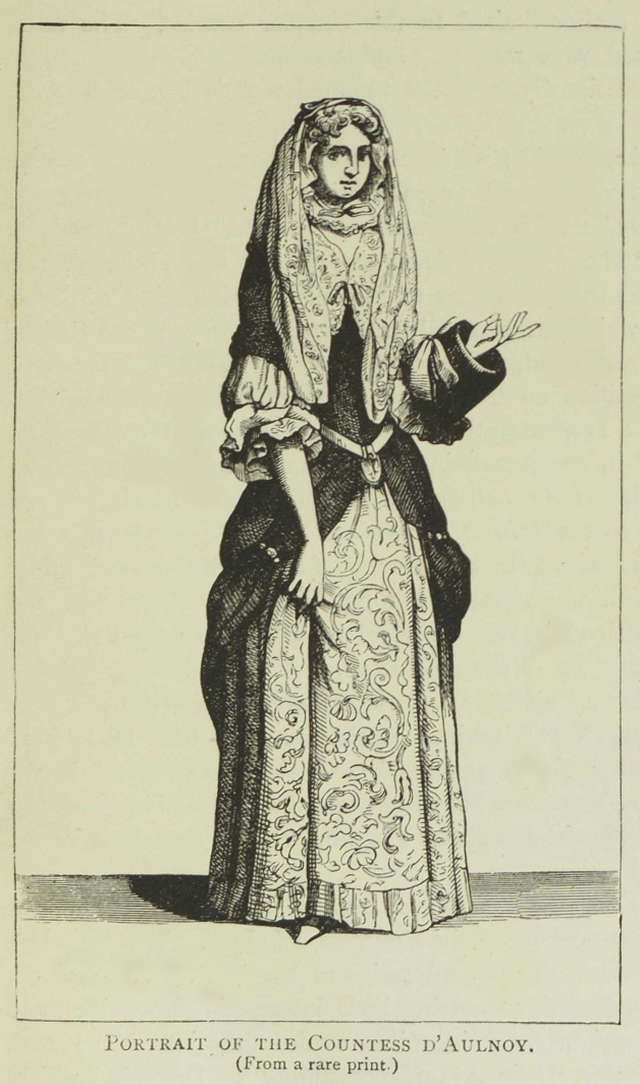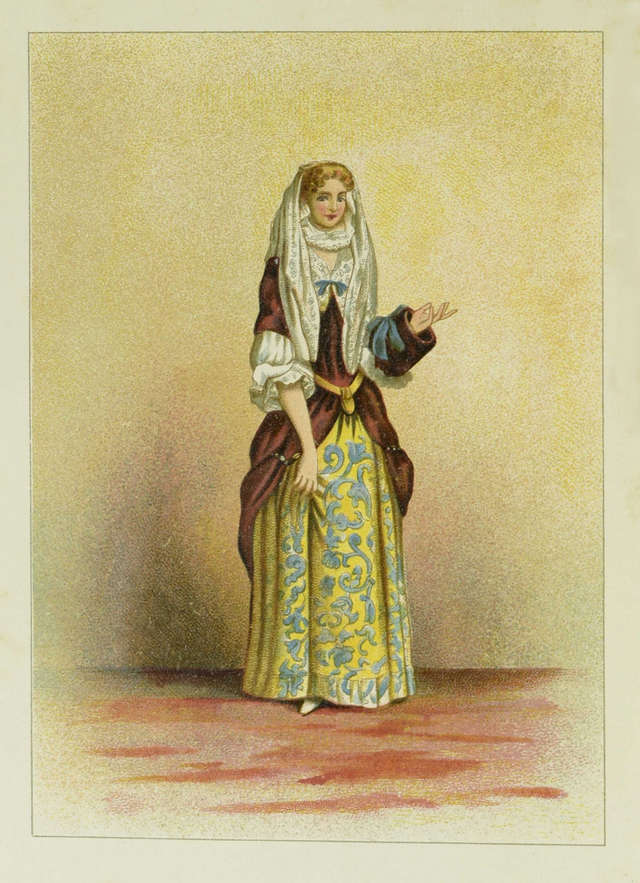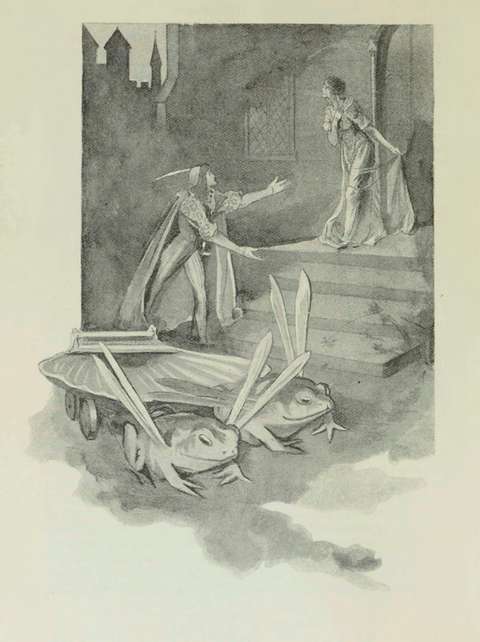Biography of Marie Catherine d'Aulnoy
Madame d'Aulnoy - one of inventors of fairy tales
Madame d'Aulnoy was a very successful author of fairy tales who is today mostly remembered as the first who used the term contes de fees (tales of fairies, or, fairy tales). Her biography is quite similar to her works, an elusive mixture of facts, borrowed excerpts or whole plots, and vivid imagination. Her birth is an unresolvable mystery. Some sources claim she was born as Marie Catherine in 1549, others in 1551. The date is unknown. Her family on the father's side (le Jumel de Barneville) was one of the oldest in Normandy. Marie Catherine was for some time considered the heiress of the family fortune but when she was about eleven years old her brother was born and her parents sent her to a nunnery.
She didn't accept that easily and her father had to promise her he'll find a husband for her as soon she was of legal age for marriage. There truly are documents claiming she was, how romantically, abducted by four masked gentlemen among which was Francoise de la Mothe, Comte d'Aulnoy. There are some contradictory facts about himself as well. He supposed to be a gambler, heavy drinker, and womanizer trying to marry into a wealthy family (Catherine later inherited a fortune anyway, because her brother died young) but there are also documents claiming he was a victim of the plot, schemed by three gentlemen, being falsely accused of treason. He spent three years in prison.

It's unclear how much was Madame d'Aulnoy, then about twenty, involved in this conspiracy which resulted in at least two executions. Her mother was part of the plot too. While she escaped to England, we don't know for sure where hid Madame d'Aulnoy. Some historians believe she spent some time in England, Holland, and Spain, and earned her pardon by becoming a spy. In this case, her communicating skills could be of great help, of course.
She returned to Paris in 1685 and started organizing social events in her salon. Her home became a visiting point of many aristocrats and telling, or even performing fairy tales was one of the favorite pass-times then. Madame d'Aulnoy wrote dozens of them, some being obvious retellings of already known stories by Giovanni Francesco Straparola or Giambattista Basile. She wrote others based on folk tales, with borrowed plots and whole paragraphs being copied from other authors.
Fairy tales were not her only literary achievement. She wrote a few novels and travelogues as well. There were also at least a dozen books published under her name, offering low-quality trash, trying to capitalize on her relatively great reputation - in England, France, Holland, and other countries. Most well-known of her works is in English speaking world called Spanish Novels. They are an amusing mixture of real-life experience, free interpretations of various artistic works, related to Spain and Catherine's lively imagination.
One such amusing anecdote tells how Madame d'Aulnoy and her three travel companions came to an inn where only one room with thirty beds was available. They decided to sleep over just to find out how the inn-keeper wanted to offer the other beds to some strangers in rags. Ladies didn't want to share the room with such people so they eventually paid for other beds just to keep the room for herself. The next morning they found out all people who came intending to sleep were actually the neighbors of the inn-keeper, who had a deal with him to convince all travelers to pay for empty beds, helping him to make some profit out of the huge and mostly vacant room.
Catherine d'Aulnoy was involved in at least one more scandal. Her close friend, Madame Tiquet, ordered the murder of her husband, but he survived and convinced the court about her guilt. Madame d'Aulnoy supposedly tried to help to escape Madame Tiquet which decided to stay and was eventually beheaded.

Apart from wild social life, we should mention Madame d'Aulnoy had at least four daughters (in one letter a son is mentioned too) with an unknown number of different men (she probably had several lovers, yet we don't have any convincing proof for none of them). The elder daughter married into nobility but fairy tales fell out of fashion with the end of the reign of Louis XIV.
While d'Aulnoy's fairy tales, made for a very specific audience in a specific environment lack the dramatic skills and universal appeal of Charles Perrault or Brother Grimm, they are still precious treasures of our cultural heritage and we intend to present them in best possible light.

© Copyright Madame d'Aulnoy's Fairy Tales